Abstract
1 It is proposed that sensitizations of autonomic effectors to agonists by drugs or procedures be considered in two main categories: those involving changes in the effective concentration of agonist at receptors (type I) and those involving changes in the responding tissue beyond the initial combination of agonist and receptors (type II). Type I sensitizations are appropriately described by determining the dose-ratio (horizontal shift of the dose-response curve) and type II sensitizations by assessing the change in the magnitude of the response.
2 The inadequacy of the dose-ratio in assessing sensitizations related to an altered physiology of the responding tissue is illustrated by means of hypothetical examples with particular reference to the slopes of dose-response curves and altered maximal responses.
3 An evaluation of the enhancement of responses of rabbit aortic strips to agonists by reserpine indicates that it is a type II sensitization. The shifts of dose-response curves to noradrenaline, isoprenaline, normetanephrine and 5-hydroxytryptamine after reserpine-treatment, were described both by the dose-ratio and by the increment in the magnitude of the response at various contraction amplitudes. The dose-ratio varied unpredictably for each agonist depending on the response level selected for comparison and also varied between agonists. However, the mm increment in response magnitude after reserpine approximated a constant value. Responses to potassium which by horizontal procedures were assessed among the least increased, were found to be enhanced the most when considered as a type II sensitization.
4 It is concluded that both type I and type II procedures should be applied when dealing with an unidentified sensitization and that the data be critically assessed. The appropriate use of these procedures can aid in identifying and clarifying sensitizations, as well as in elucidating the sequence of steps between receptor activation and response in an effector.
Full text
PDF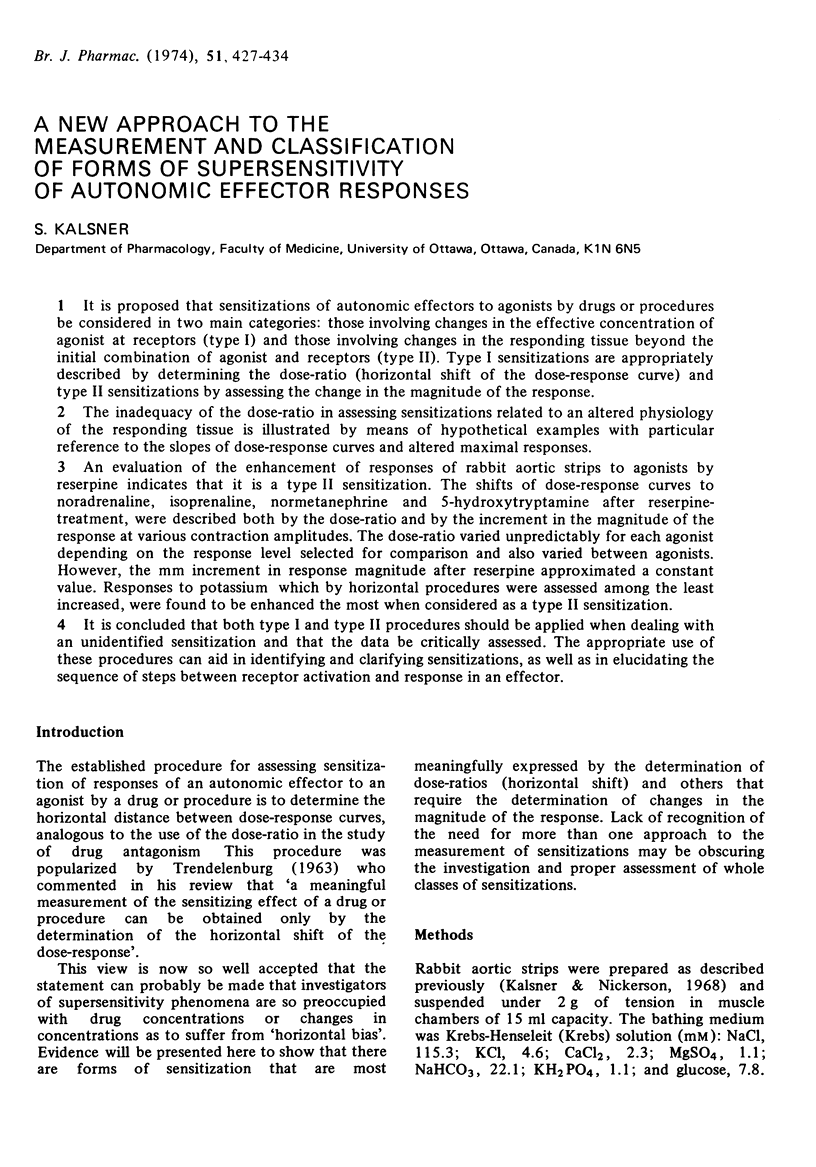
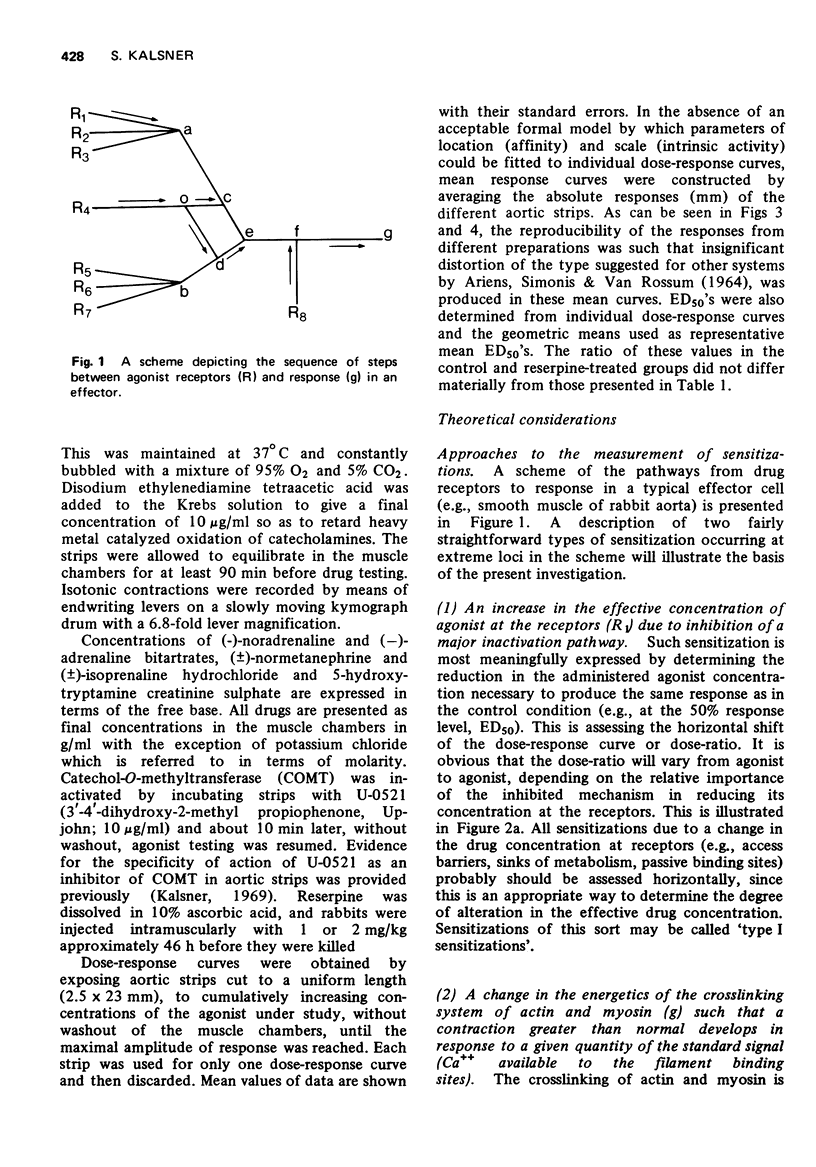
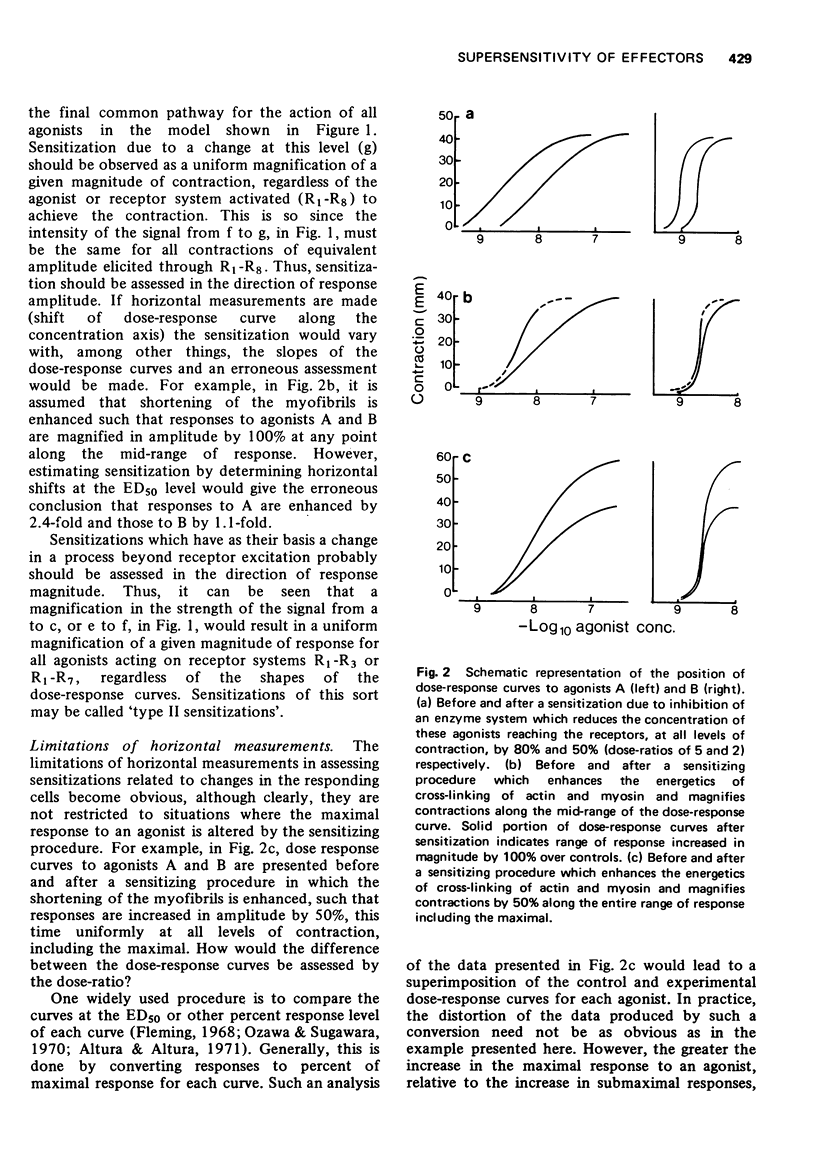
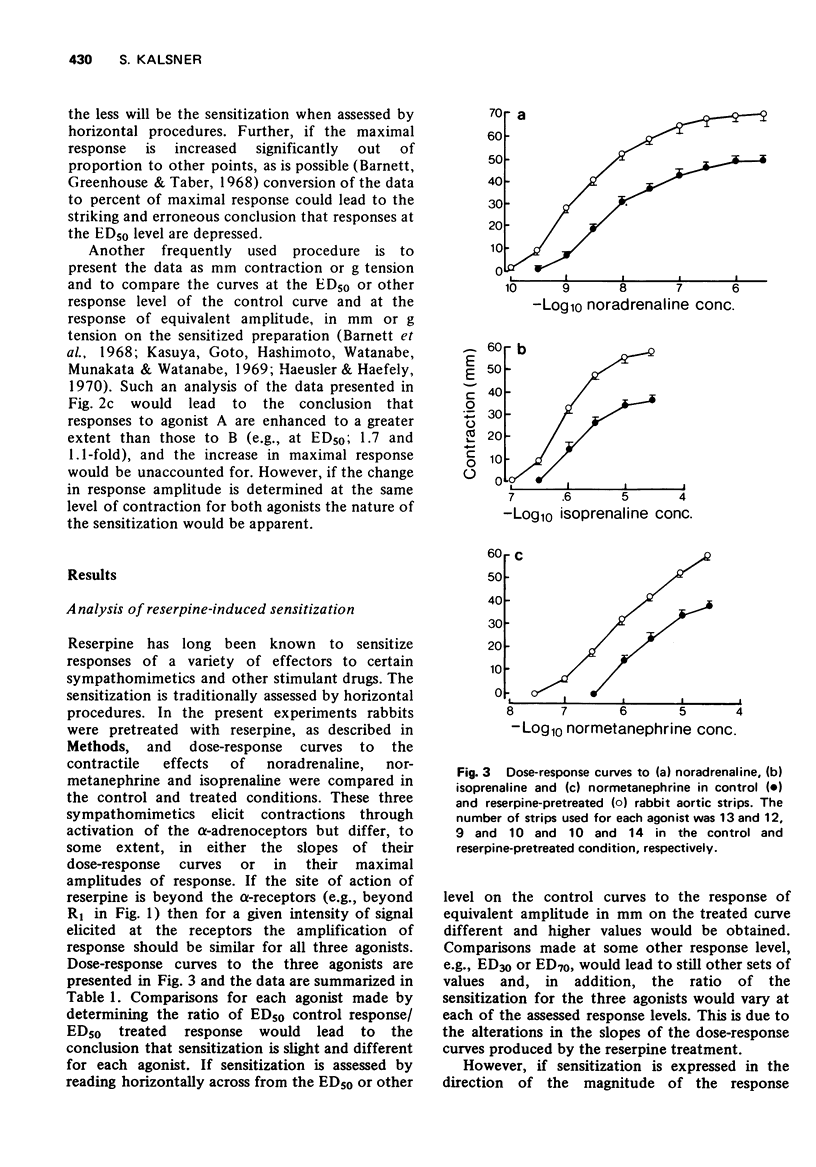
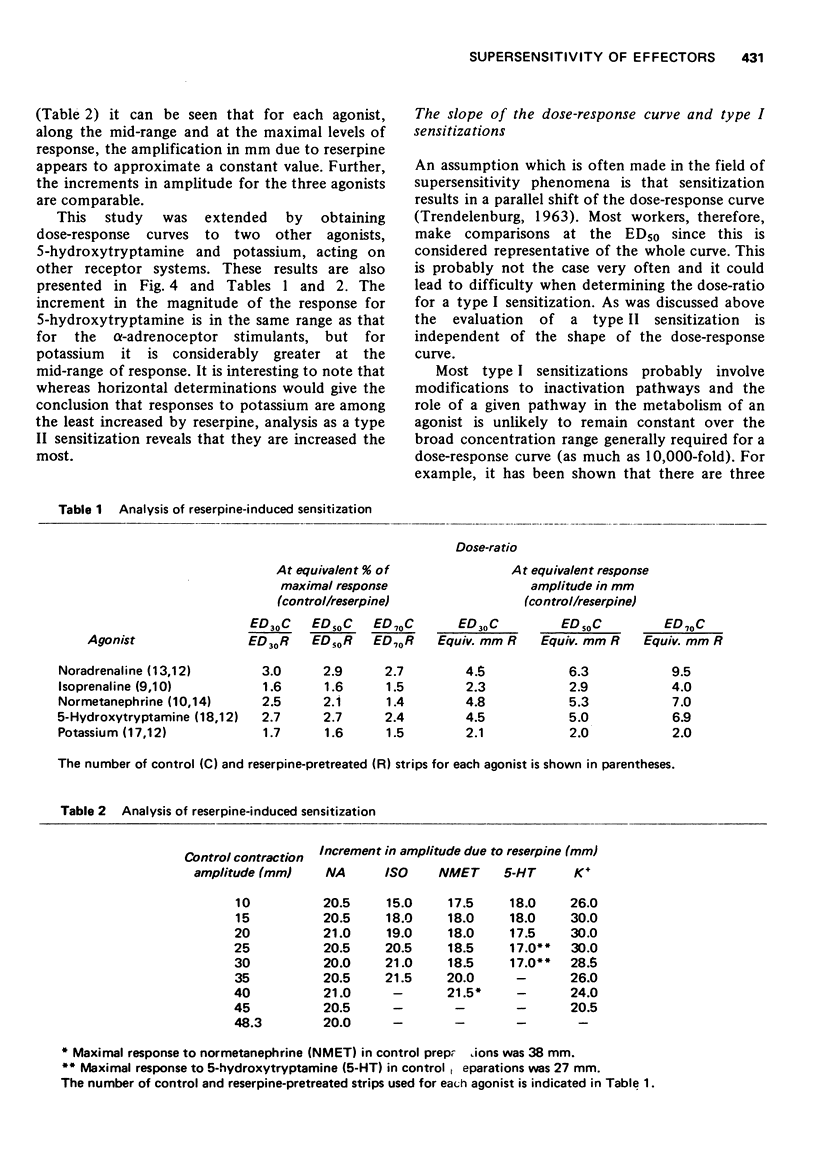
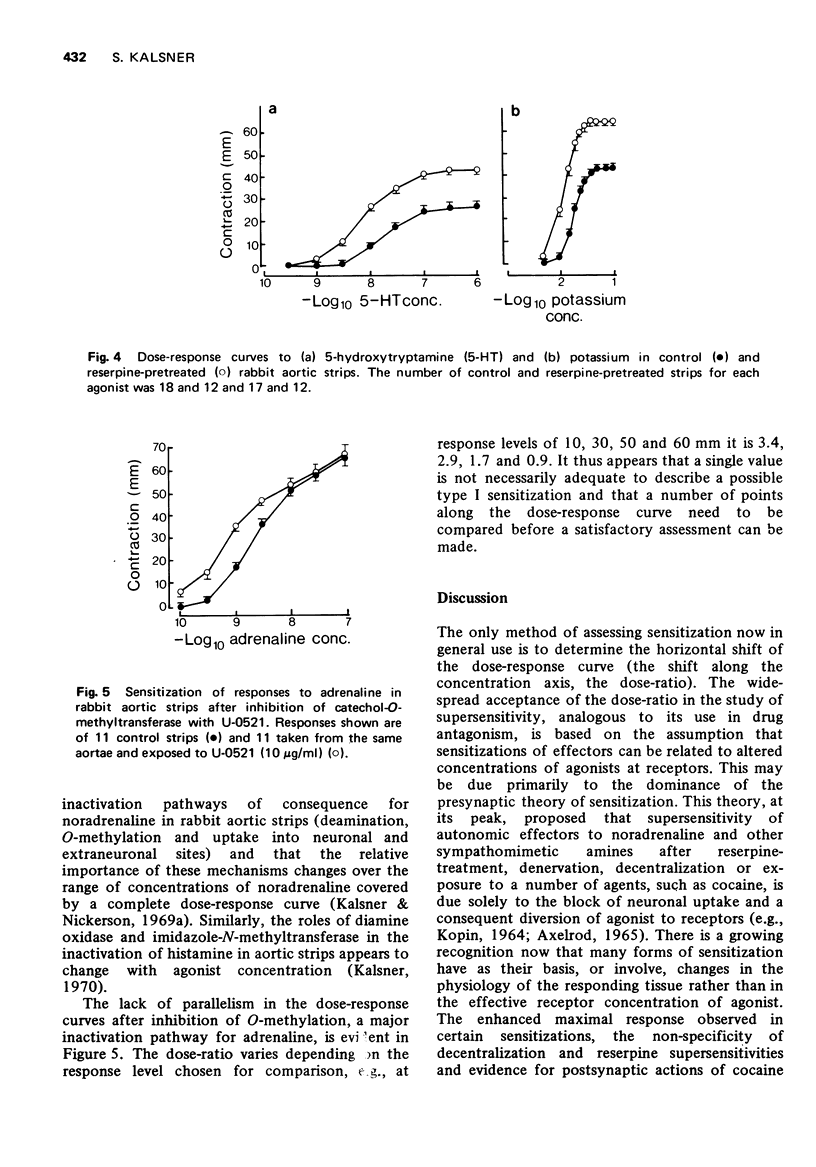
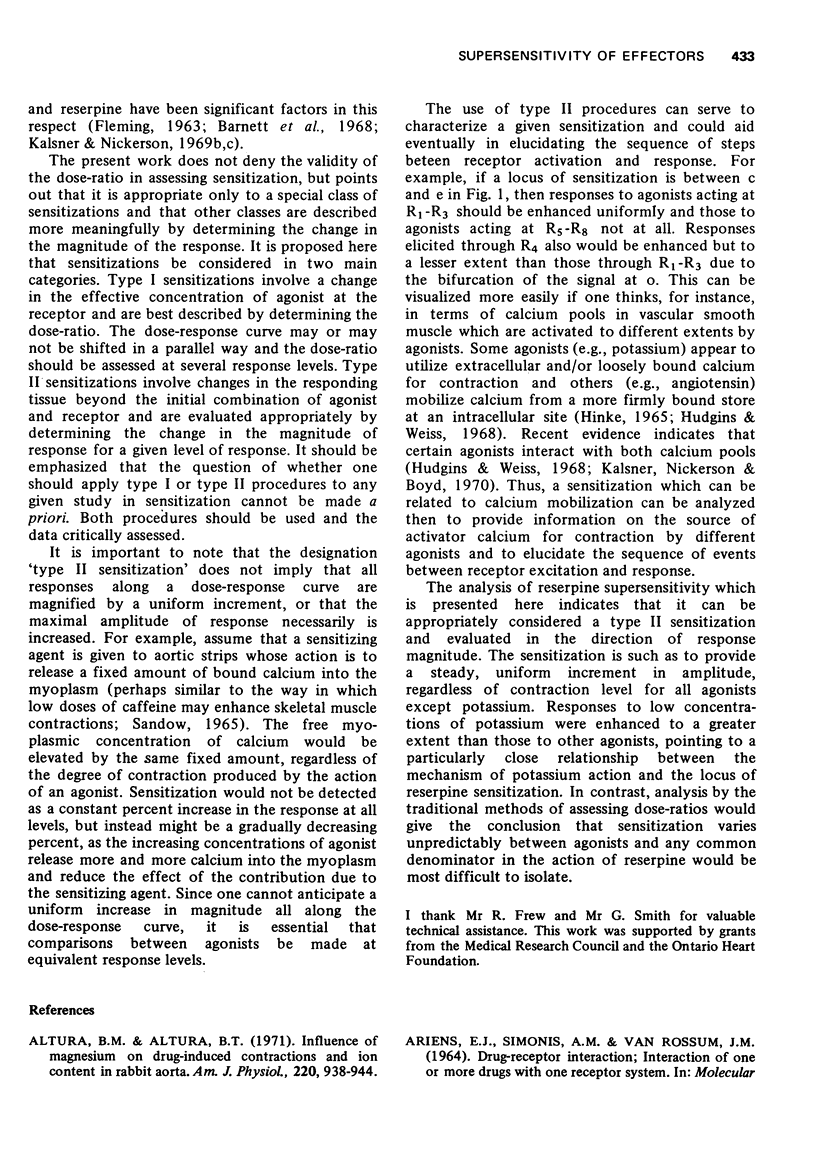
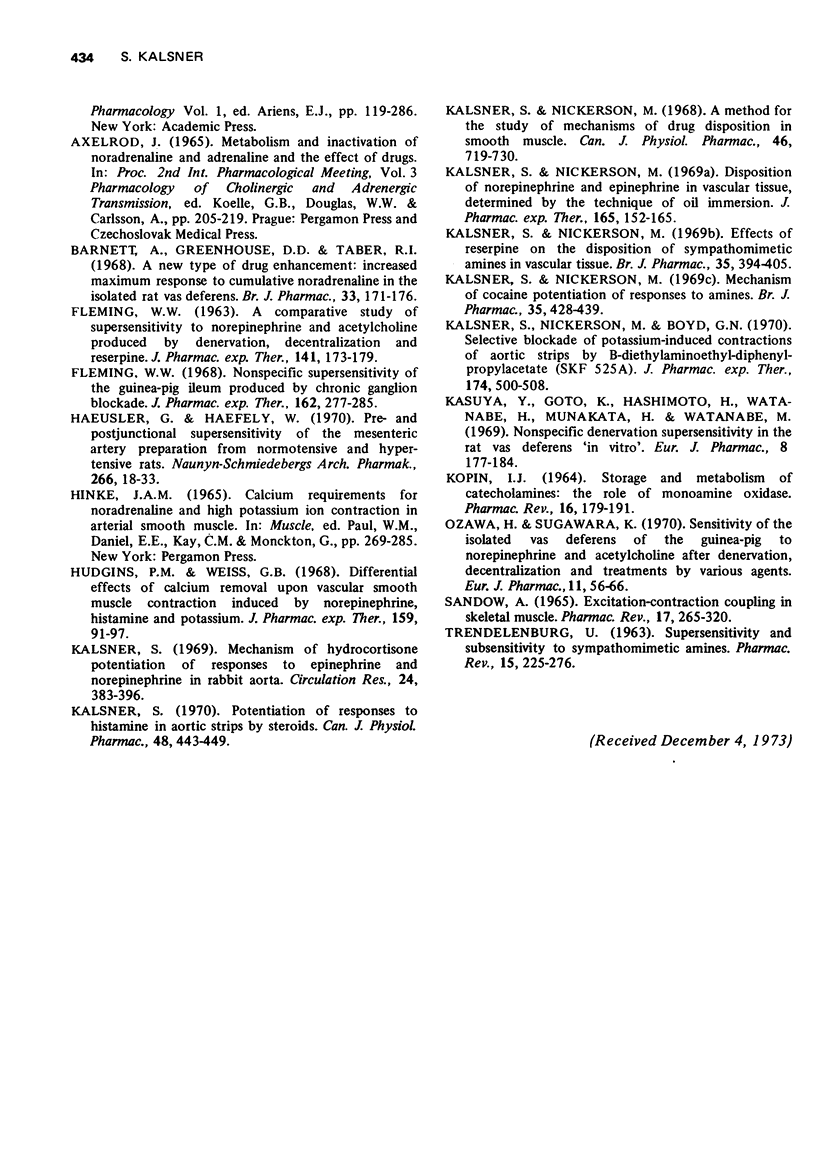
Selected References
These references are in PubMed. This may not be the complete list of references from this article.
- Altura B. M., Altura B. T. Influence of magnesium on drug-induced contractions and ion content in rabbit aorta. Am J Physiol. 1971 Apr;220(4):938–944. doi: 10.1152/ajplegacy.1971.220.4.938. [DOI] [PubMed] [Google Scholar]
- Barnett A., Greenhouse D. D., Taber R. I. A new type of drug enhancement: increased maximum response to cumulative noradrenaline in the isolated rat vas deferens. Br J Pharmacol Chemother. 1968 May;33(1):171–176. doi: 10.1111/j.1476-5381.1968.tb00485.x. [DOI] [PMC free article] [PubMed] [Google Scholar]
- FLEMING W. W. A COMPARATIVE STUDY OF SUPERSENSITIVITY TO NOREPINEPHRINE AND ACETYLCHOLINE PRODUCED BY DENERVATION, DECENTRALIZATION AND RESERPINE. J Pharmacol Exp Ther. 1963 Aug;141:173–179. [PubMed] [Google Scholar]
- Fleming W. W. Nonspecific supersensitivity of the guinea-pig ileum produced by chronic ganglion blockade. J Pharmacol Exp Ther. 1968 Aug;162(2):277–285. [PubMed] [Google Scholar]
- Haeusler G., Haefely W. Pre- and postjunctional supersensitivity of the mesenteric artery preparation from normotensive and hypertensive rats. Naunyn Schmiedebergs Arch Pharmakol. 1970;266(1):18–33. doi: 10.1007/BF00997779. [DOI] [PubMed] [Google Scholar]
- Hudgins P. M., Weiss G. B. Differential effects of calcium removal upon vascular smooth muscle contraction induced by norepinephrine, histamine and potassium. J Pharmacol Exp Ther. 1968 Jan;159(1):91–97. [PubMed] [Google Scholar]
- KOPIN I. J. STORAGE AND METABOLISM OF CATECHOLAMINES: THE ROLE OF MONOAMINE OXIDASE. Pharmacol Rev. 1964 Jun;16:179–191. [PubMed] [Google Scholar]
- Kalsner S. Mechanism of hydrocortisone potentiation of responses to epinephrine and norepinephrine in rabbit aorta. Circ Res. 1969 Mar;24(3):383–395. doi: 10.1161/01.res.24.3.383. [DOI] [PubMed] [Google Scholar]
- Kalsner S., Nickerson M. A method for the study of mechanisms of drug disposition in smooth muscle. Can J Physiol Pharmacol. 1968 Sep;46(5):719–730. doi: 10.1139/y68-113. [DOI] [PubMed] [Google Scholar]
- Kalsner S., Nickerson M., Boyd G. N. Selective blockade of potassium-induced contractions of aortic strips by beta-diethylaminoethyl-diphenylpropylacetate (SKF 525A). J Pharmacol Exp Ther. 1970 Sep;174(3):500–508. [PubMed] [Google Scholar]
- Kalsner S., Nickerson M. Disposition of norepinephrine and epinephrine in vascular tissue, determined by the technique of oil immersion. J Pharmacol Exp Ther. 1969 Feb;165(2):152–165. [PubMed] [Google Scholar]
- Kalsner S., Nickerson M. Mechanism of cocaine potentiation of responses to amines. Br J Pharmacol. 1969 Mar;35(3):428–439. doi: 10.1111/j.1476-5381.1969.tb08284.x. [DOI] [PMC free article] [PubMed] [Google Scholar]
- Kalsner S. Potentiation of responses to histamine in aortic strips by steroids. Can J Physiol Pharmacol. 1970 Jul;48(7):443–449. doi: 10.1139/y70-068. [DOI] [PubMed] [Google Scholar]
- Kasuya Y., Goto K., Hashimoto H., Watanabe H., Munakata H., Watanabe M. Nonspecific denervation supersensitivity in the rat vas deferens "in vitro". Eur J Pharmacol. 1969 Nov;8(2):177–184. doi: 10.1016/0014-2999(69)90074-0. [DOI] [PubMed] [Google Scholar]
- Ozawa H., Sugawara K. Sensitivity of the isolated vas deferens of the guinea-pig to norepinephrine and acetylcholine after denervation, decentralization and treatments by various agents. Eur J Pharmacol. 1970 Jul 1;11(1):56–66. doi: 10.1016/0014-2999(70)90254-2. [DOI] [PubMed] [Google Scholar]
- Sandow A. Excitation-contraction coupling in skeletal muscle. Pharmacol Rev. 1965 Sep;17(3):265–320. [PubMed] [Google Scholar]
- TRENDELENBURG U. Supersensitivity and subsensitivity to sympathomimetic amines. Pharmacol Rev. 1963 Jun;15:225–276. [PubMed] [Google Scholar]


